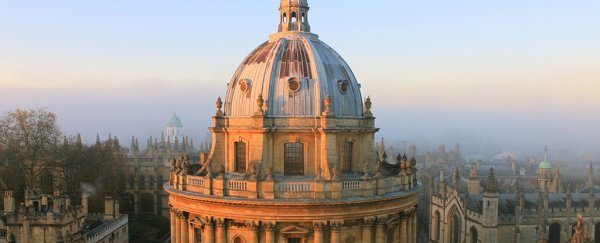Oxford in the UK wants to become the world's first carbon emission-free city by 2035, with a plan to ban all petrol and diesel vehicles from the city centre over the next 20 years. The initiative will run in phases, with the first restrictions coming into place in 2020.
The move is partly a response to the levels of nitrogen dioxide (NO2) in the centre of Oxford, levels which have been dropping but remain dangerously high – the gas is produced by burning fuel and causes breathing difficulties and other respiratory problems.
According to the authorities, only allowing zero-emission vehicles into Oxford city centre by 2035 would cut down nitrogen dioxide to "near-background levels", a reduction of up to 74 percent on some of Oxford's streets.
"Toxic and illegal air pollution in the city centre is damaging the health of Oxford's residents," says one of the Oxford City Council board members, John Tanner. "A step change is urgently needed; the Zero Emission Zone is that step change."
"All of us who drive or use petrol or diesel vehicles through Oxford are contributing to the city's toxic air. Everyone needs to do their bit – from national government and local authorities, to businesses and residents – to end this public health emergency."
Home to the oldest university in the English-speaking world, Oxford's city centre is characterised by tightly-packed historical buildings and narrow streets, meaning traffic often gets clogged up and vehicle emissions are heavily concentrated as a result.
Proposals on which types of vehicles should be banned first, and from which streets, will be revealed on Monday at the start of a six-week public consultation process – anyone who wants to comment on the plans will be able to do so.
Petrol and diesel taxis, cars, light commercial vehicles, and buses would be targeted first, with fuel-burning heavy goods vehicles the last to go. By 2035, you'll have to go electric if you want to drive into the centre of Oxford.
According to data from the World Health Organisation, Oxford is one of 11 British cities that have more toxic PM10 particles in the air than is safe – that's particulate matter like dust, soot, and smoke up to 10 micrometres (μm) in diameter.
Oxford isn't the only city struggling with air pollution, of course, and the UK capital London also has plans of its own for an ultra-low emission zone. From September 2020, you'll need to drive a zero-emission vehicle or pay a toll to get into parts of London city centre.
More broadly the UK is planning to ban the sale of new petrol and diesel vehicles by 2040. France has committed to the same year, and China is planning a similar move, though it hasn't decided on a timeline yet.
All eyes will be on the pioneering scheme in Oxford to see what impact the moves have on traffic, health, and air pollution. The city already has a Low Emission Zone, put in place in 2014.
"We want to hear from everyone who uses the city centre – including businesses, bus and taxi firms and local residents so that we get the fullest possible picture," says Councillor Yvonne Constance.
"Pragmatism will be an important part of anything we plan but we have set the ambition and now we would like to hear people's views on our proposals."
Oxford City Council has also put together a video on the proposals, which you can see below:

